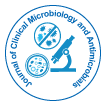

Nauman Altaf
Comparison and control of two widely spread species of mosquito’s and their surveillance i.e.; Aedes (albopictus and egyptii) and Anopheles that spread infectious diseases. Nauman Altaf 1 , Muhammad Nawaz 2 , Natasha Rafique 3 . 1. Entomologist, Punjab, Pakistan. 2. D.D.O (H), Punjab, Pakistan 3. Research Scholar, U.A.F, Pakistan *Corresponding author: Nauman Altaf, Entomologist, Punjab, Pakistan, Tel: + 92- 3331647203; E- mail: simply.nauman@gmail.com Copyright: ©2020 Nauman A. This is an open-access article distributed under the terms of the Creative Commons Attribution License, which permits unrestricted use, distribution, and reproduction in any medium, provided the original author and source are credited. Statement of Problem: Dengue and Malaria fever is transmitted by Mosquitoes and it can be controlled by controlling mosquitoes. Aedes (egyptii, albopictus) and Anopheles mosquitoes are the vectors of dengue and malaria fever respectively. They breed and transmit infectious agent in the same way. Malaria is an acute pyretic illness in a nonimmune individual and dengue virus has a wide spectrum of illnesses, ranging from ordinary infection, flu-like mild undifferentiated fever, to more severe forms like Dengue hemorrhagic fever (DHF) and Dengue shock syndrome (DSS). The purpose of study is to merge the dengue surveillance and malaria surveillance programs to control the vectors i.e.; Aedes an Anopheles by practicing more result oriented and rational approach at earlier stages to inhibit the transmission of infectious entities (dengue virus and malaria protozoan). Figure 1: CD= Communicable Disease; EPC= Epidemic Prevention Control; CEO= Chief Executive Officer; DOH= District Officer Health, DDOH= Deputy District Officer; CDCO= Communicable Disease Control Officer; CDCI= Communicable Disease Control Inspector; UCMO= Union Council Monitoring Officer; LHW= Lady Health Worker; MHW= Male Health Worker; SP= Sanitary Petrol Methodology and Theoretical Orientation: An observational study was conducted by observing the teams working for the control of dengue and malaria fever separately. Two separate programs are running under separate directorates using separate funds, human resource and facilities for dengue and malaria surveillance, separate teams are working for their control. These two separate working teams are merged to check the efficacy of surveillance and control program. Findings: By observing the framework of their work it is observed that the pattern and method of their work is same as both the vectors are exactly of same life stages with difference of habitat and time period so merged together, this increases the manpower and efficacy of work and reduces the use of resources and chance of spread of infectious diseases or epidemics. Conclusion and Significance: It is concluded that these separate running programs are to be merged together to get more appropriate results in less time and resources that leads towards the savings of more lives from dengue and malaria fever.
Published Date: 2020-07-31;